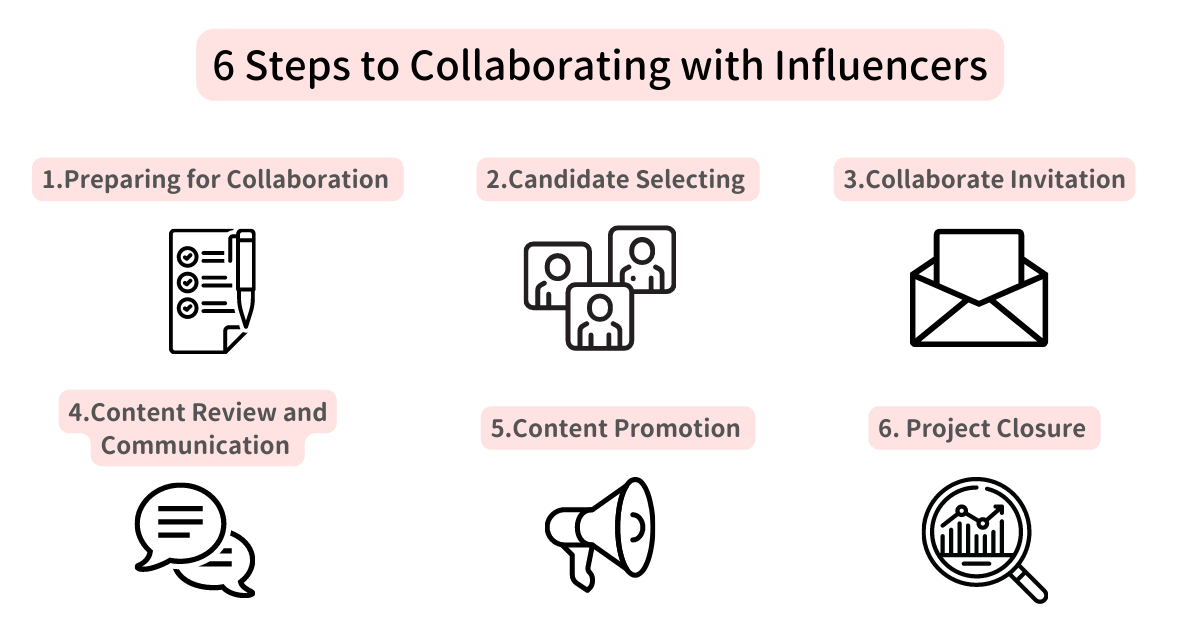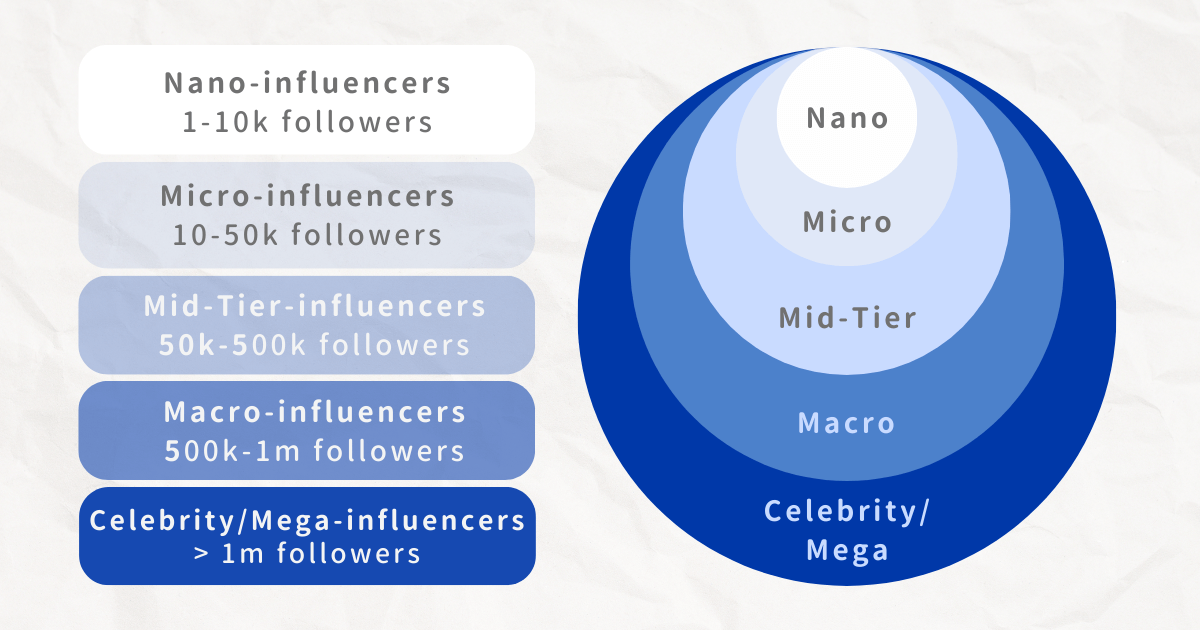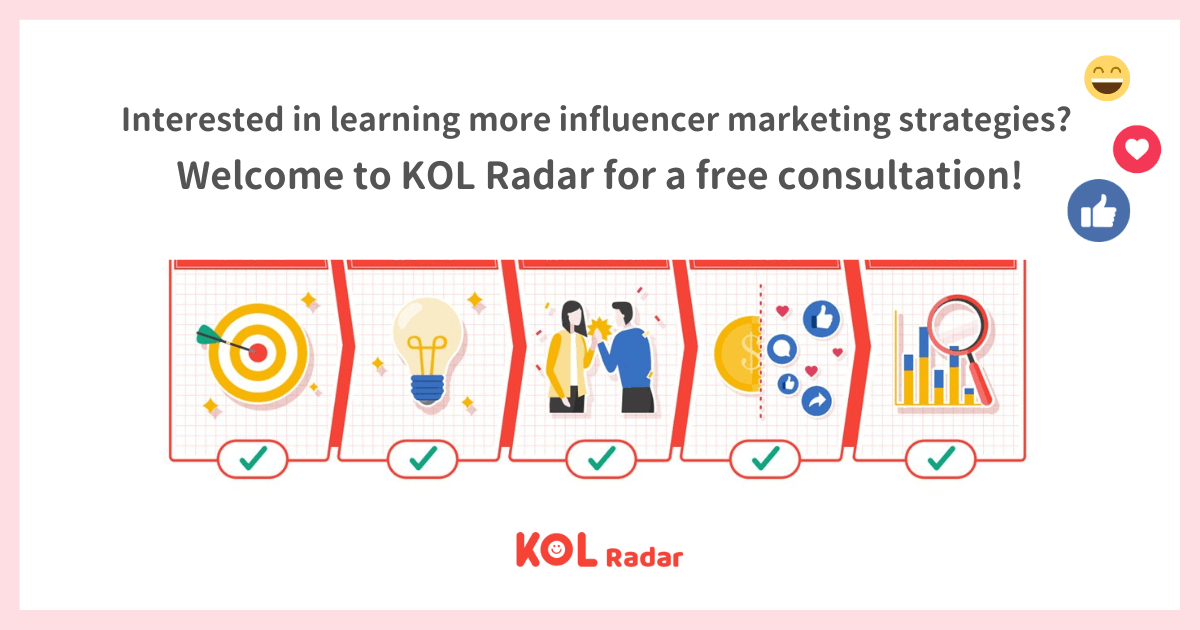As the influence of social media continues to grow, more brands are exploring ways to collaborate with influencers for brand promotion and services as well as boost their online growth.
What benefits can collaborating with influencers bring to a brand? What are the available collaboration channels and steps to reach out to influencers, and what are the essential aspects to consider when collaborating with one? This in-depth guide by KOL Radar will unveil insights to get you started!
Unlocking Brand Marketing Potential: The Advantages of Partnering with Influencers
1. Enhancing Trust and Purchase Intent
Compared to traditional advertising methods, consumers are more likely to trust an influencer’s endorsements and recommendations, which can effectively leave a lasting impression on the brand, increase brand favourability, and further enhance product sales. As a result, more and more brands are partnering with influencers to promote products and increase product awareness through KOL’s (key opinion leader) recommendations.
2. Word-of-Mouth Marketing
Influencer collaboration allows brands to create a buzz via comments on social media and on online platforms through influencer-recommended content. This sustainable strategy helps establish a positive reputation for the product in social media, fosters stronger consumer brand perception, and enhances consumer trust and loyalty to the brand.
3. Wide Market Reach
Influencers can provide brands with higher exposure beyond the confines of h traditional marketing methods. By leveraging the creativity and influence of selected influencers, brands can quickly spread their message on social media, igniting conversations and raising market awareness.
6 Steps A Brand Needs to Undertake To Collaborate with Influencers

6 Steps A Brand Needs to Undertake to Collaborate with Influencers(Resource: KOL Radar)
1. Preparing for Influencer Collaboration
Before collaborating with influencers, it is crucial for brands to establish their product positioning, identify unique selling points, and pinpoint their target audience to find influencers that match the product’s tone and style. Brands should also define clear marketing objectives, such as increasing exposure or boosting conversions, to develop tailored and appropriate marketing strategies
2. Selecting Influencers
When selecting influencers for collaboration, brands should consider not only their popularity but also their style and alignment with the brand’s product or target audience. Evaluating an influencer’s platform followers is important, but also understanding their primary audience, communication style, and engagement methods.
3. Inviting Collaborators
When extending collaboration invitations and collaboration agreements, it is crucial for brands to provide clear details about the collaboration content, product details, and compensation terms. If brands have specific requirements such as “exclusivity” or “advertising placements,” these should be clearly written down in a proposed contract.
4. Content Management and Communication
After the initial steps, formal collaboration begins and the influencer starts creating promotional content for your brand. Maintaining a consistent and timely line of communication ensures that both parties’ expectations are fulfilled. If the influencer’s content doesn’t meet the brand’s expectations or contains errors, the brand has the right to request revisions. However, brands should adhere to the contract guidelines and provide enough time and flexibility for the influencer’s creative process.
5. Content Promotion
Once the collaboration content is completed and online, brands can amplify its impact by integrating it with other promotional tools, such as strategic ad placements to boost exposure, strategic resharing of influencer content on owned media platforms, or combining influencer content with brand experiences and testimonials to further enhance product credibility.
6. Project Closure
Analyzing the outcomes of a marketing campaign is crucial. After an influencer collaboration project is completed, brands can evaluate the effectiveness of the collaborative campaign with an influencer by using interactive data (such as likes and views), engagement metrics (like engagement rates and click-through rates), and conversion data (such as cost per engagement and cost per view). These insights can guide future marketing campaigns leading to further and continuous optimisation.
Finding Influencers: A Comparison of Two Methods
Finding Influencers Independently
When a brand decides to find influencers on its own, there are two primary approaches to selecting suitable candidates, brands can pick an influencer based on their follower range or their content type, and we will share with you the pros and cons of each approach:
1. Based on the Influencer Follower Range
Influencers can be categorized into eight different categories based on their follower count. Brands can choose influencers from these categories based on their specific marketing objectives. Generally, influencers with a smaller follower count tend to have higher engagement rates and greater trust among their audience. This makes them suitable for collaborations that aim to enhance product reputation. On the other hand, influencers with larger follower counts have a wider reach, making them more suitable for marketing objectives that focus on increasing product exposure.
??Read more:“What Are Nano-Influencers? Small Following, Big Impact in Influencer Marketing”

Comparison of Different Sizes of Influencer Tiers (Source:KOL Radar )
2. Based on Influencer Content Type
Apart from considering different influencer tiers and follower counts, brands can also select influencers based on their content type and style. For example, a brand in the mother and baby care products can collaborate with parenting influencers, while a financial sector brand can partner with finance-related influencers. This approach allows a seamless integration of the brand’s products with the influencer’s content and reaches the target audience interested in relevant subjects. If a brand is faced with multiple potential candidates, brands can further refine their selection by comparing the influencers’ social media performance metrics to select the most impactful influencer for collaboration.

KOL Radar categorizes influencer content into 27 different types, including sports, makeup, parenting, and more.
Discovering Influencers with Professional Teams
When time and human resources are limited, brands can enlist the help of professional teams to find and identify suitable influencers. A dedicated influencer marketing team can efficiently and accurately identify suitable candidates for the brand. With their extensive project execution experience, they can facilitate smooth communication between the brand and the influencer, reducing the hidden costs associated with brands searching for KOLs on their own.
This results in the development of more impressive influencer marketing campaigns. The table below compares the differences between KOL Radar’s professional influencer marketing service team and brands searching for influencers on their own:
| Finding Influencers Independently | Finding Influencers Through KOL Radar | |
| Candidate Matching Accuracy | Lower | Exclusive AI database screening, Higher matching accuracy |
| Strategy Formulation | Time-consuming and labour-intensive, Limited precision in strategy | Understanding social media dynamics and industry trends, Ensuring quality |
| Communication Cost | Higher | Familiar with Project Execution Processes, Lower Communication Costs |
| KOL Collaboration Pricing | Higher | Experienced in influencer collaboration, Easier to get discounts |
| Performance Tracking | Time-consuming and labour-intensive, Prone to errors | Driven by AI crawling technology, High real-time capability and greater accuracy |
Finding influencers independently VS Finding influencers through KOL Radar
Conclusion
Influencer marketing has become a vital part of online brand promotion strategies. Although collaborating with influencers involves multiple steps, if you grasp the details and proceed carefully, you can open up a flow of customers and gain marketing benefits beyond your expectations!
With KOL Radar‘s expert influencer marketing team and our database of over 300,000,000 influencers powered by AI, we offer brands a seamless end-to-end influencer marketing service from planning to execution. We resolve any challenges that might come up, helping brands execute influencer marketing campaigns more efficiently and accurately!

Interested in learning more about influencer marketing collaboration strategies? Feel free to consult with KOL Radar: https://www.kolradar.com/en/
▶︎ This article may not be reproduced, redistributed, publicly broadcasted, or publicly transmitted in any form. Copyrights and portrait rights of the images and data cited in this article remain with the original rights holders.



